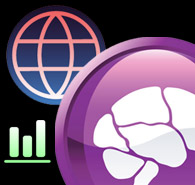Archive for the ‘Commentary’ Category
Tuesday, November 11th, 2014
by Siegfried Othmer, PhD

W hy is it that our nation has not made more progress in dealing with PTSD and TBI over all these years? Admittedly, the whole concept of PTSD only dates back to about 1980, which is rather astounding. But matters are even worse with regard to TBI. We’ve been living with automobile-involved head injuries in huge numbers for nearly a century; there are in addition the common occurrences of minor head injuries among children; and at the other end of the age range we confront all those falls among the elderly leading to minor traumatic brain injury. And yet there has been no real coming to grips with this problem until we confronted the conundrum of blast injury—injury without apparent direct impact on the brain—among our service members. One could well say that the field of medicine essentially ignored what is called ‘minor’ traumatic brain injury until the 21st century.
(more…)
Posted in Application of Neurofeedback, Commentary, Health Care, Neurofeedback, PTSD, Veterans | No Comments »
Friday, September 12th, 2014
by Siegfried Othmer, PhD

A t the time of the storming of the Bastille in 1789, King Louis the 16th wrote in his private journal: “Rien.” Nothing. Just a few years later, he was beheaded and himself came to nothing. One could make similar judgments about our field. No one in the suites at Pfizer is quaking in his boots at the contemplation of our ascendancy. We don’t yet count for very much. But biofeedback and neurofeedback are gradually marbling into the mainstream. The scientific foundations are being shored up; the techniques are being refined; the products are becoming ever more competent, as well as more attractive in their features; and the methods are becoming more people-friendly. Most importantly, the scope of what we can now accomplish with our methods is expanding to cover the entire realm of mental health. At the moment, the contrast between the actual prospects of self-regulation-based therapies, and the awareness prevailing in the rest of the world about their potential, could hardly be greater.
(more…)
Posted in Application of Neurofeedback, Commentary, Neurofeedback, Professional Issues | 2 Comments »
Friday, November 11th, 2011

 On this Veterans Day we wanted to take a moment to thank all of the clinicians who have joined Homecoming for Veterans to support those in need by providing neurofeedback treatment for veterans with PTSD at no cost. Each day veterans are returning from deployments abroad and facing the challenges of life back home. We are so proud of the work that is being done by our network of clinicians, and want to encourage all of our colleagues who are practicing neurofeedback treatment to consider joining the Homecoming for Veterans team. On this Veterans Day we wanted to take a moment to thank all of the clinicians who have joined Homecoming for Veterans to support those in need by providing neurofeedback treatment for veterans with PTSD at no cost. Each day veterans are returning from deployments abroad and facing the challenges of life back home. We are so proud of the work that is being done by our network of clinicians, and want to encourage all of our colleagues who are practicing neurofeedback treatment to consider joining the Homecoming for Veterans team.
We all know this is a huge challenge. According to the Department of Veterans Affairs in June 2010, there were 171,423 deployed Iraq and Afghanistan war veterans diagnosed with PTSD, out of a total of 593,634 patients treated by the VA. But the toll goes beyond just the numbers. Every day we hear stories of vets who are returning home only to struggle with depression and alcohol and drug abuse. These health issues are leading to broken families, homelessness and in far too many cases, suicide.
(more…)
Posted in Application of Neurofeedback, Commentary, Health Care, Neurofeedback, Outreach, PTSD, Veterans | No Comments »
Monday, June 20th, 2011
 Today the web-based newspaper The Daily published a front-page article on Infra-Low Frequency Neurofeedback in application to PTSD. Along with the article there is also a six-minute video that illustrates the training procedure and basic approach. Reporter Katie Drummond did her homework on this topic over a number of months, finally coming out to our office from New York and showing up at our office with a video crew in order to try the training herself and to get acquainted with the principals. Today the web-based newspaper The Daily published a front-page article on Infra-Low Frequency Neurofeedback in application to PTSD. Along with the article there is also a six-minute video that illustrates the training procedure and basic approach. Reporter Katie Drummond did her homework on this topic over a number of months, finally coming out to our office from New York and showing up at our office with a video crew in order to try the training herself and to get acquainted with the principals.
(more…)
Posted in Application of Neurofeedback, Biofeedback, Commentary, Neurofeedback, Professional Issues, PTSD, Veterans, Video | No Comments »
Wednesday, January 6th, 2010
 To someone who has been educated in the sciences it is somewhat jarring to see so many people blithely dismiss the alarming evidence in favor of global warming. And yet when it comes to neurofeedback, we are quite comfortable flying in the face of mainstream thinking and simply dismissing the mainstream position (of skepticism with respect to neurofeedback) as essentially meaningless. In one case, we regard scientific consensus as highly significant; in the other, we hold it in utter contempt. How can one justify both positions simultaneously? To someone who has been educated in the sciences it is somewhat jarring to see so many people blithely dismiss the alarming evidence in favor of global warming. And yet when it comes to neurofeedback, we are quite comfortable flying in the face of mainstream thinking and simply dismissing the mainstream position (of skepticism with respect to neurofeedback) as essentially meaningless. In one case, we regard scientific consensus as highly significant; in the other, we hold it in utter contempt. How can one justify both positions simultaneously?
The answer lies in the nature of the evidence for both propositions. What makes the case in favor of global warming so persuasive is that it is supported by so many independent lines of evidence, all of which collectively support a model that in turn is also well-supported, namely the key influence of atmospheric CO2 concentrations on global temperatures. Much of this evidence came to exist in the course of research that was unrelated to the issue of global warming. Add to the known influence of CO2 that of many other gaseous effluents, which can be tens to thousands of times worse in terms of their greenhouse effect, and we have ourselves a rather dangerous stew.
For evidence, one needs to look at those changes that average over short-term fluctuations, and one needs to look at regions where the effects are expected to be largest and to show up first: the arctic. Already we know that arctic summer sea ice is running at less than half of what it was half a century ago. Ominous signs of the decay of ice sheets are also seen in the Antarctic. Supporting evidence is then furnished by such findings as arctic flowers blooming earlier, butterflies moving their territories northward in England, and birds advancing the calendar on their nesting behavior. Altered composition of phytoplankton in arctic waters indicates that chemical changes have reached the level of biological significance.
(more…)
Posted in Commentary, Neurofeedback, Professional Issues, Research, Scientific | 2 Comments »
Saturday, December 12th, 2009
 The issue of sudden, rapid acceleration in Toyota vehicles presents an interesting case study of how our society approaches rare hazardous events, and a consideration of this history can shed light on how other such instances are handled that are of more direct interest to us here. It turns out that this issue has been with us for some time. About 1000 suspicious acceleration events have been recorded over eight years, with some 19 deaths registered in Toyotas since 2002. The issue of sudden, rapid acceleration in Toyota vehicles presents an interesting case study of how our society approaches rare hazardous events, and a consideration of this history can shed light on how other such instances are handled that are of more direct interest to us here. It turns out that this issue has been with us for some time. About 1000 suspicious acceleration events have been recorded over eight years, with some 19 deaths registered in Toyotas since 2002.
Complaints of sudden, unintended acceleration rose rapidly after Toyota replaced mechanical throttles with electronic controls in 2002. By the time that this problem received significant attention, however, the hypothesis of causation by floor mats interfering with the gas pedal was well entrenched. So that hypothesis continued to be advanced even after it ceased to be very credible. After all, the problem occurred even in vehicles where the floor mats had been removed, and where nothing was engaging the gas pedal (as at a stoplight). As recently as a few months ago, our National Highway Safety Administration saw no reason to inquire beyond the mundane hypothesis involving floor mats. And the recall of 4.2 million cars is majorly targeted to the replacement of gas pedals so that they will be less confused by the floor mats.
(more…)
Posted in Application of Neurofeedback, Autism, Commentary, Neurofeedback | 4 Comments »
|
|
Subscribe to Email Newsletter
The EEG Info Newsletter circulates via email at least once a month. A variety of topics related to the Neurofeedback / EEG Biofeedback field are covered in over 200 articles.
|



 On this Veterans Day we wanted to take a moment to thank all of the clinicians who have joined Homecoming for Veterans to support those in need by providing neurofeedback treatment for veterans with PTSD at no cost. Each day veterans are returning from deployments abroad and facing the challenges of life back home. We are so proud of the work that is being done by our network of clinicians, and want to encourage all of our colleagues who are practicing neurofeedback treatment to consider joining the Homecoming for Veterans team.
On this Veterans Day we wanted to take a moment to thank all of the clinicians who have joined Homecoming for Veterans to support those in need by providing neurofeedback treatment for veterans with PTSD at no cost. Each day veterans are returning from deployments abroad and facing the challenges of life back home. We are so proud of the work that is being done by our network of clinicians, and want to encourage all of our colleagues who are practicing neurofeedback treatment to consider joining the Homecoming for Veterans team. Today the web-based newspaper The Daily published a front-page article on Infra-Low Frequency Neurofeedback in application to PTSD. Along with the article there is also a six-minute video that illustrates the training procedure and basic approach. Reporter Katie Drummond did her homework on this topic over a number of months, finally coming out to our office from New York and showing up at our office with a video crew in order to try the training herself and to get acquainted with the principals.
Today the web-based newspaper The Daily published a front-page article on Infra-Low Frequency Neurofeedback in application to PTSD. Along with the article there is also a six-minute video that illustrates the training procedure and basic approach. Reporter Katie Drummond did her homework on this topic over a number of months, finally coming out to our office from New York and showing up at our office with a video crew in order to try the training herself and to get acquainted with the principals. To someone who has been educated in the sciences it is somewhat jarring to see so many people blithely dismiss the alarming evidence in favor of global warming. And yet when it comes to neurofeedback, we are quite comfortable flying in the face of mainstream thinking and simply dismissing the mainstream position (of skepticism with respect to neurofeedback) as essentially meaningless. In one case, we regard scientific consensus as highly significant; in the other, we hold it in utter contempt. How can one justify both positions simultaneously?
To someone who has been educated in the sciences it is somewhat jarring to see so many people blithely dismiss the alarming evidence in favor of global warming. And yet when it comes to neurofeedback, we are quite comfortable flying in the face of mainstream thinking and simply dismissing the mainstream position (of skepticism with respect to neurofeedback) as essentially meaningless. In one case, we regard scientific consensus as highly significant; in the other, we hold it in utter contempt. How can one justify both positions simultaneously? The issue of sudden, rapid acceleration in Toyota vehicles presents an interesting case study of how our society approaches rare hazardous events, and a consideration of this history can shed light on how other such instances are handled that are of more direct interest to us here. It turns out that this issue has been with us for some time. About 1000 suspicious acceleration events have been recorded over eight years, with some 19 deaths registered in Toyotas since 2002.
The issue of sudden, rapid acceleration in Toyota vehicles presents an interesting case study of how our society approaches rare hazardous events, and a consideration of this history can shed light on how other such instances are handled that are of more direct interest to us here. It turns out that this issue has been with us for some time. About 1000 suspicious acceleration events have been recorded over eight years, with some 19 deaths registered in Toyotas since 2002.
Veteran’s Day 2014
Tuesday, November 11th, 2014by Siegfried Othmer, PhD
W hy is it that our nation has not made more progress in dealing with PTSD and TBI over all these years? Admittedly, the whole concept of PTSD only dates back to about 1980, which is rather astounding. But matters are even worse with regard to TBI. We’ve been living with automobile-involved head injuries in huge numbers for nearly a century; there are in addition the common occurrences of minor head injuries among children; and at the other end of the age range we confront all those falls among the elderly leading to minor traumatic brain injury. And yet there has been no real coming to grips with this problem until we confronted the conundrum of blast injury—injury without apparent direct impact on the brain—among our service members. One could well say that the field of medicine essentially ignored what is called ‘minor’ traumatic brain injury until the 21st century.
(more…)
Posted in Application of Neurofeedback, Commentary, Health Care, Neurofeedback, PTSD, Veterans | No Comments »